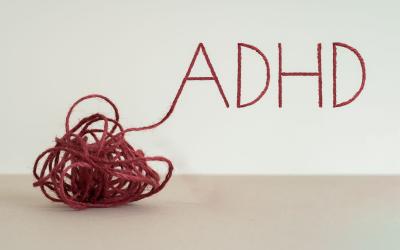Why the early identification of speech and language delays is important

Language development is a fundamental aspect of a child's early years, shaping their ability to communicate, learn, and interact with the world. However, some children may experience speech and language delays, which can impede their progress and hinder social and academic success.
This is why early identification of speech and language delays is vital. Early identification means early intervention: by detecting delays early on in young children, caregivers, educators, and healthcare professionals can provide the necessary interventions and support needed, and ensure that all children reach their full potential as they grow and develop.
How to identify speech and language delays
Speech and language development follows a typical set of milestones during a child's early years. These milestones provide a framework for assessing a child's language skills. For example, a two-year-old should be able to use simple phrases and sentences. By understanding these milestones, caregivers and healthcare providers can identify potential language delays when a child lags behind in achieving them.
It’s important to note that while educators and healthcare professionals are an invaluable resource in detecting and diagnosing speech and language delays, caregivers also play a crucial role in recognising potential delays, and often provide the first step towards early identification. Because of this, parents and guardians are actively encouraged to pay attention to their child's communication skills and be aware of any red flags, such as limited vocabulary or trouble following directions.
How can observation help identify speech, language, and communication delays?
Observation is one of the most valuable tools for identifying speech and language delays in children. By keeping an eye on children’s language development, their caregivers or healthcare providers can spot potential issues as early as possible, and then seek appropriate support.
Observation can help with:
- Detecting early signs of delays. Observation allows caregivers to detect subtle signs of language delay. These signs may include a child's reluctance to speak, limited babbling, or persistent stuttering. Identifying these issues early can lead to faster intervention and improved outcomes.
- Comparing against milestones. Regular observation enables caregivers to compare their child's language skills to age-appropriate milestones. If a child consistently falls behind these milestones, it can be an indication of a language delay, prompting timely intervention.
- Tracking progress. Observation is not a one-time task. Continuously monitoring a child's speech and language development allows caregivers to track progress – and this tracking is essential for assessing the effectiveness of any interventions and adjusting strategies accordingly.
How to address speech and language delays
There are several strategies available to support children with their speech and language delays. For example, professional resources can include:
- Speech and language therapists (SLTs). Speech and language therapy involves structured sessions with an SLT to address specific language problems. These sessions may include activities to improve vocabulary, grammar, and communication skills. Early language therapy can be instrumental in helping a child catch up to their peers in language development.
- Audiologists. Hearing disorders can contribute to language delays, so if a child is suspected of having a delay, they’ll often be referred to an audiologist, which is a healthcare professional that specialises in diagnosing and treating hearing problems. They can identify a child’s hearing loss and provide solutions such as hearing aids.
- Paediatricians. Regular check-ups with paediatric professionals and other relevant specialists in health care are essential for monitoring a child's development. They can provide guidance on the early identification of speech and language delays, and refer children to specialists when needed.
Obstacles to the early identification of speech and language delays
While many people recognise the importance of early identification and intervention in speech and language delays, there remain obstacles that can hinder this process. These include:
- Lack of awareness. Many parents and caregivers may not be fully aware of language development milestones, risk factors, or the signs of speech and language delays.
- Limited access to specialists. In some regions, there may be a shortage of speech-language therapists, audiologists, or other specialists, making it challenging for families to access specialised care in a timely manner.
- Stigma. Some caregivers may be hesitant to acknowledge that their child has a language delay due to fear of stigma or denial.
- Complexity of diagnosis. Identifying the root cause of language delays can be complex. It may involve multiple factors such as hearing loss, speech sound disorders, developmental disorders, communication disorders, or autism, which require thorough assessments by specialists.
The potential impacts of not identifying developmental delays
Failing to identify and address speech and language delays early enough can have long-lasting consequences for a child's development. Some of these include:
- Academic challenges. Language skills are foundational for success in school. Children with untreated language delays may struggle with reading, writing, and comprehension, which can impact their academic performance – and their self-esteem.
- Social and emotional difficulties. Communication difficulties can lead to social isolation and frustration. For example, children with language delays may experience increased anxiety, hindering their social interactions and emotional well-being.
- Persistent language problems. Untreated language impairments can persist into adulthood, making it challenging for people to communicate effectively in their personal and professional lives.
- Missed opportunities. Early language difficulties may lead to missed opportunities for language-rich experiences, such as engaging with peers, excelling in extracurricular activities, and pursuing preferred career paths.
- Longer and costlier interventions. Delayed intervention often requires more intensive and extended therapy once an issue has eventually been identified.
Support children with speech and language delays
Create inclusive environments that support children with additional or complex needs with the 100% online MA Special and Inclusive Education at Queen Margaret University. This flexible, part-time master’s course has been carefully designed to fit around the busy schedules of working professionals, ensuring that studies can be conducted alongside work and family commitments. You can learn while continuing in your current role, and immediately apply what you learn to your professional context.
Through an interdisciplinary lens you will learn about the role an inclusive education plays in emancipation, liberation, and true democracy. You will also examine the structural inequalities in both society and education, and their impact on educational outcomes. In doing so, you will learn ways to address these inequalities in different contexts to ensure that education is inclusive for all.













The information below is required for social login
Login to your Account